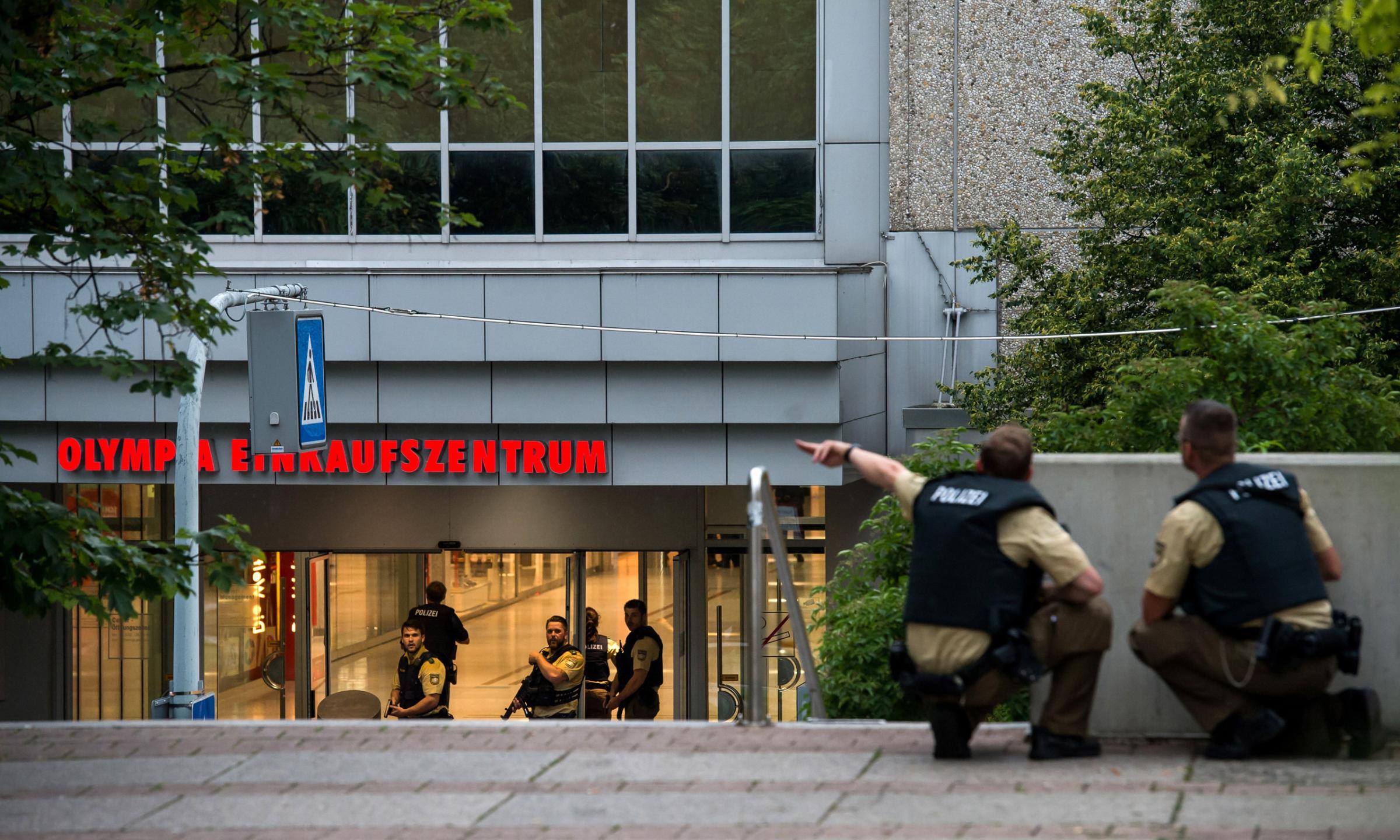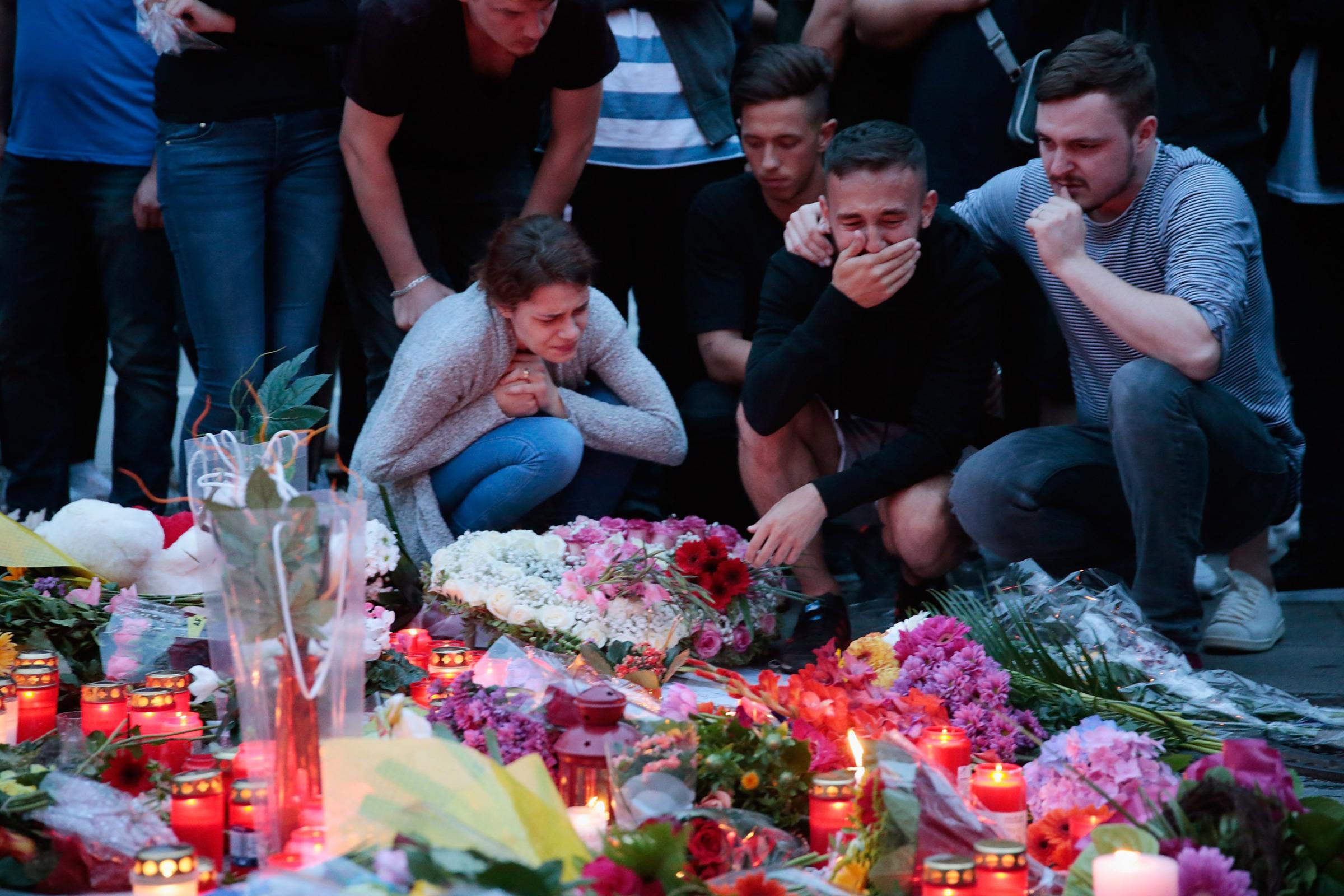On Friday evening, as a lone gunman opened fire outside of fast food restaurant in Munich, the Twitter feed of the city’s police department went into overdrive, sending out a stream of pleas and warnings in several languages, among them French, English and Turkish. “There has been gunfire – the Situation is unclear,” its office of public affairs wrote at 9:02 pm. “The suspects are still on the run,” it added eight minutes later. “Please avoid public places.”
As the massacre unfolded, leaving nine people dead and more than a dozen wounded, officers realized that many of their tweets had been wrong. There had not been multiple shooters armed with “long guns” – only one 18-year-old firing a semi-automatic pistol. There had not been multiple incidents of gunfire in different parts of the city – only one around Munich’s largest shopping mall.
But as more than 4,000 calls to the city’s emergency hotline poured in over the course of six hours, police decided to spread the unverified information that they were receiving from these callers and other sources. Marcus de Gloria Martins, the department’s chief spokesman, concedes that this decision may have helped to spread panic. But he insists it was justified. “We have a security commitment to the populace,” he told TIME at police headquarters on Saturday afternoon. “We could not take hours to verify, well, is this really the case. We have to react.”
In many ways, the decision to err on the side of transparency arose from the mistakes that the Cologne police department made on New Year’s Eve in Germany. That night, gangs of men, mostly of North African and Middle Eastern descent, committed hundreds of robberies, sexual assaults and even a number of rapes outside the city’s main train station, where a massive crowd had gathered to celebrate and set off fireworks. Even as dozens of victims reported these crimes to police that night, the department’s press office failed to issue any kind of warning for people to stay away from the square.

The following morning, a bizarre statement from the Cologne police department reported that the New Year’s Eve celebrations had unfolded in a “jolly atmosphere.” Only a few days later, as news of the attacks spread on social media and hundreds of victims began to come forward, the Cologne police admitted their mistake. The chief of the department, Wolfgang Albers, was soon forced to resign “to restore public trust in the police.”
His colleagues in Munich were clearly not about to make the same mistake during the rampage on Friday evening. “The situation is somewhat similar to the events of New Year’s Eve,” says de Gloria Martins. “Our approach was to make sure the people of Munich know that, okay, we have a problem.”
The people of Munich got the message. Across the city, residents opened their homes and businesses to panicked strangers who were rushing to clear the streets. Radio reports on Saturday morning featured interviews with people who had been holed up in such shelters for much of the night.
Hours later, the city’s police chief, Hubertus Andrae, faced criticism for initially overstating the threat on his department’s Twitter feed. During a press briefing at police headquarters on Saturday afternoon, a local reporter asked him whether police had not jumped the gun in calling the incident a “terror attack” and declaring a citywide state of emergency. “Anything else would have been totally unprofessional,” Andrae countered.
With hindsight, though, the police did seem to respond with overwhelming force to a lone teenager firing a pistol. A total of around 2,300 officers from various police departments and security services were deployed across Munich on Friday night to respond to the shooting, including the elite counter-terrorism and border-security unit known as GSG-9.
The response seemed to unnerve some people in the city more than the actual shooter did. “When you see policemen with machine guns shouting at you to hide,” tweeted Lenka Judinova, who had come from Slovakia for a bus tour of Munich with her family. “It was the worst day of my life.”
In many ways, it was a sign of how tense the security situation in Europe has become since the recent the spate of ISIS-claimed terror attacks in France and Belgium. The need for vigilance was underscored again in the days after the Munich shootings, as two more acts of horrifying violence struck in southern Germany. In the first, a Syrian asylum seekers hacked a woman to death with a machete on Sunday in the town of Reutlingen, a murder that police have called a likely “crime of passion.” Hours later, another Syrian asylum seeker set off a bomb outside of a music festival in Ansbach, killing himself and wounding 12 people.
But so far, the shootings in Munich, which police are treating as a “rampage” with no political or religious motive, has been the clearest sign of the anxieties over terrorism now gripping Germany and its neighbors.

Lucia Judinova, 16, twin of Lenka, recalled that the family was about three miles away from the scene of the shooting when policemen with masks and assault rifles waved for them to seek shelter. Inside a nearby building, some workers allowed the family and other members of the tour group to wait out the alarm, and after about an hour, the officers got in their vehicles and drove off. “Strangely, seeing them go away made me feel a bit safer,” Lucia says.
Throughout the day, German television showed policemen in the streets with commando-style uniforms and weapons – scenes that that may seem painfully familiar, or even commonplace, to viewers in the U.S., where police often deploy tactical gear and military vehicles even when dealing with fairly routine public disturbances. But in Germany, a nation whose history of military aggression has made the public especially resistant to such displays of force, these scenes have been exceedingly rare – as are the kinds of terror incidents that usually warrant citywide mobilizations.
Europe’s sense of security has, however, been eroded by the recent spate of violence, and police have struggled to adjust their responses to such incidents in an age when rumors and false reports spread instantly on social media. While praising the conduct of the Munich police department on Friday, Interior Minister Thomas Thomas de Maiziere admitted that the authorities had struggled to manage the flow of information during the attack. “Nowadays, in the age of social networks, it is no longer the police who have control over the quantity and timing of the release of information, but everyone,” he said.
That posed an urgent dilemma for the Munich police department, and during the massacre on Friday evening, they did their best to stop people from stoking fear and confusion through the spread of false reports. “Please restrain any speculations,” they wrote on Twitter, “That would help us a lot!”
But once the actual scale of the attack became clear, so did the fact that many of these speculations had been flowing through the department’s Twitter feed. Over the weekend, this gave officers reason to reflect on how Munich must strike the balance between keeping its citizens safe and keeping them calm and well-informed. De Gloria Martins, the police spokesman, says the recent series of terrorist attacks in Western Europe has made it much harder to avoid mass panic when the latest violent incident erupts. “The whole community has to work on this,” he says. “But it is also the responsibility of the police.”
More Must-Reads From TIME
- The 100 Most Influential People of 2024
- Coco Gauff Is Playing for Herself Now
- Scenes From Pro-Palestinian Encampments Across U.S. Universities
- 6 Compliments That Land Every Time
- If You're Dating Right Now , You're Brave: Column
- The AI That Could Heal a Divided Internet
- Fallout Is a Brilliant Model for the Future of Video Game Adaptations
- Want Weekly Recs on What to Watch, Read, and More? Sign Up for Worth Your Time
Contact us at letters@time.com